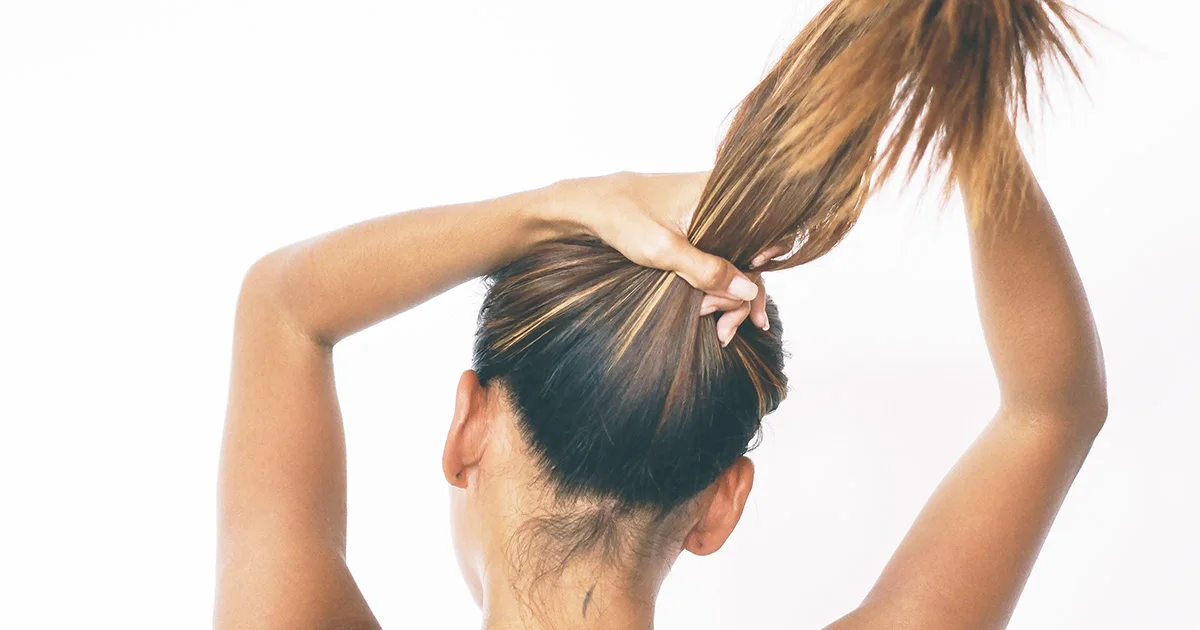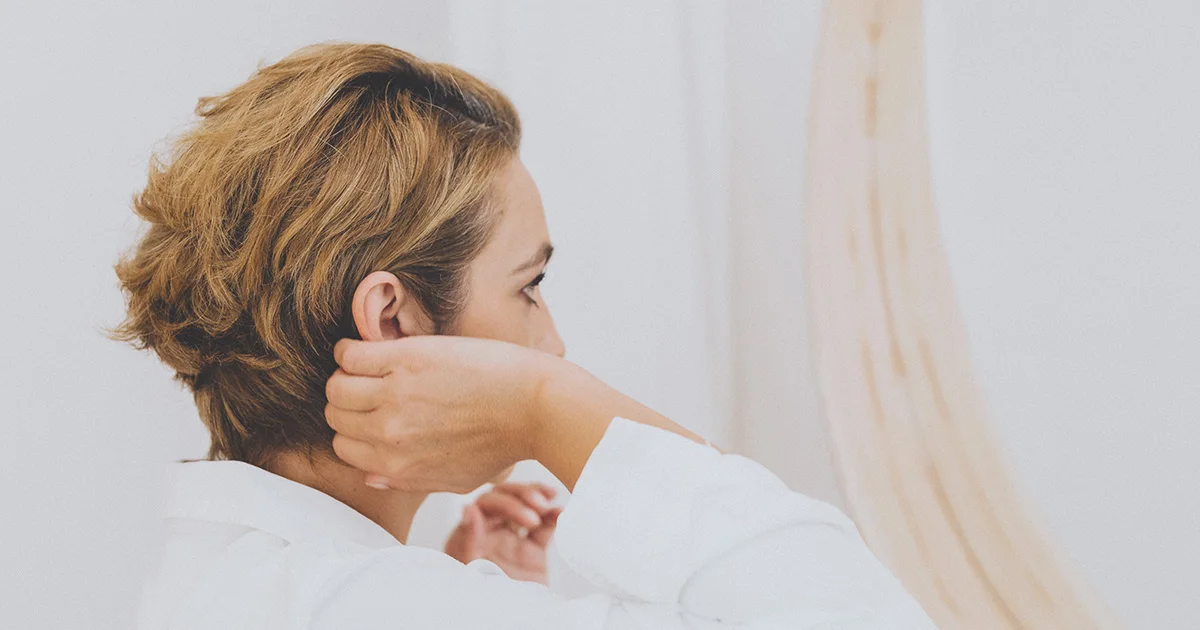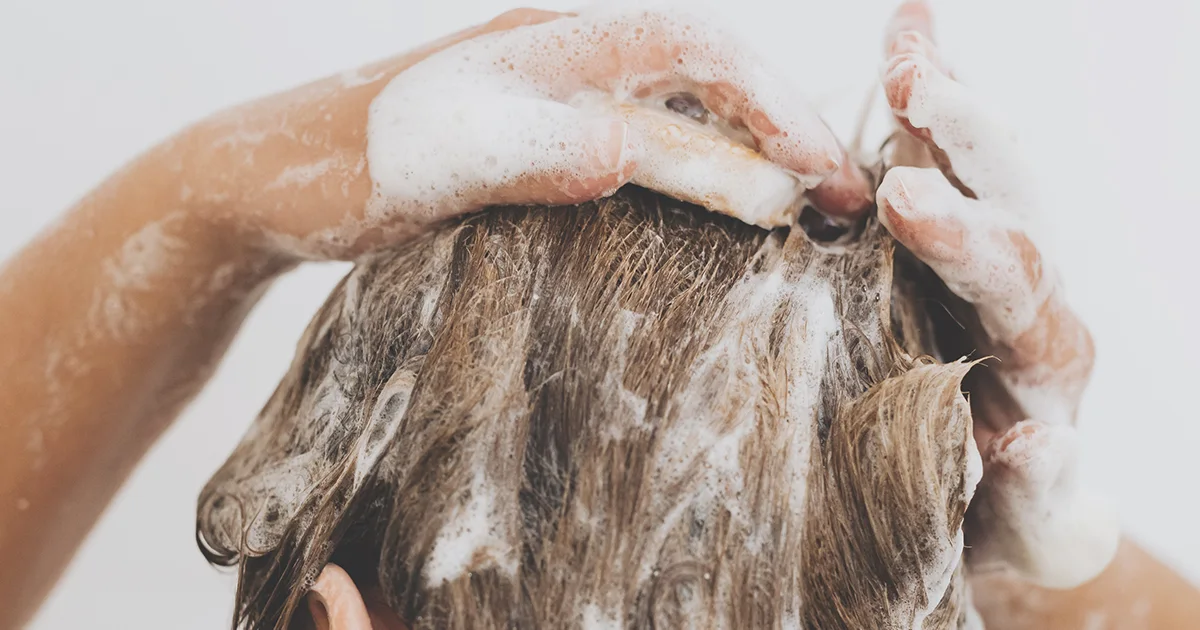Here's what we'll cover
Here's what we'll cover
Even before puberty hit, we knew to dread dandruff—thanks to TV commercials, which taught us that those flakes on the collar or shoulders are a fearsome social scourge. First, it's not as bad as all that. Dandruff is perfectly normal, and there are several over-the-counter solutions that can clear it up.
Doctors have been working on them since ancient times. In a book written in the early 1900s, pioneering French dermatologist Raymond Sabourad wrote 280 pages on the history of dandruff (unfortunately not available on Amazon). The ancient Greeks called it pityriasis, Middle Ages physicians called it tinea, and they argued for centuries about what caused it while taking the occasional whisk broom to their shoulders. Luckily, they settled on the causes in the modern era, paving the way for those anxiety-inducing commercials—along with some very effective treatments.
What is dandruff?
Dandruff is flaking of the skin on the scalp, usually accompanied by itchiness. The flakes can be yellow or white. Dandruff is more common after puberty, and it's more common in men than women. We can thank male hormones for that.
It's caused by skin cells on the scalp reproducing too quickly. They build up, then combine with scalp oils to form the telltale yellow or white flakes.
Dandruff can be caused by several things. According to the Mayo Clinic, these include; not shampooing enough; a yeastlike fungus (Malassezia) that feeds on oils on the scalps of most adults; dry skin; sensitivity to hair care products (called contact dermatitis); and other skin conditions, including psoriasis and eczema. Most of the time, a mild, over-the-counter shampoo will get rid of dandruff (Mayo Clinic, 2019).
Anti-dandruff shampoos
A good first step for getting rid of dandruff is to try an over-the-counter shampoo with pyrithione zinc (such as Head & Shoulders) or selenium sulfide (Selsun Blue). Their active ingredients are antibacterial and antifungal agents that can cut down on flaking and itching. They're very mild and unlikely to cause scalp irritation.
If those don't work, you can try a ketoconazole shampoo (brand name Nizoral). This fights the fungus believed to be a source of dandruff. Researchers believe that ketoconazole has the additional benefit of disrupting DHT's destructive effects on hair follicles, helping stem male pattern baldness when used in conjunction with finasteride (brand name Propecia) (Hugo Perez, 2004; Roman-a, n.d.)
If those don't work after a few weeks, you can try an exfoliating shampoo containing salicylic acid (Neutrogena T/Sal, DHS Sal) or coal tar (Neutrogena T/Gel, TeraGel). At this point, it's a good idea to consult a dermatologist or your primary care provider.
Finasteride Important Safety Information: Read more about serious warnings and safety info.
How to get rid of dandruff naturally
A number of home remedies are touted for dandruff online.
Tea tree oil is an essential oil that's found in many shampoos and skin products. It has natural antibacterial qualities. One study found that using 5% tea tree oil for four weeks was effective in reducing dandruff (Satchell, 2002).
Aloe vera gel is derived from the aloe plant, which has been used for centuries to reduce inflammation, soothe burns, and promote wound healing. It also seems to have natural antibacterial and antimicrobial properties. One study found that using aloe vera gel might prevent dandruff (Hashemi, 2015).
The acidity of apple cider vinegar might limit the proliferation of malassezia fungus. You can try mixing equal parts ACV and water and letting it sit on your scalp for a few minutes before rinsing it off.
Lemongrass oil is another essential oil with natural antifungal and antimicrobial properties. One small study found that men who used a hair tonic with lemongrass oil saw a significant reduction in their dandruff; another study found that lemongrass oil killed Malassezia fungus in lab tests (Chaisripipat, 2015; Wuthi-Udomlert, 2011). Several shampoos on the market contain lemongrass.
Applying coconut oil on an itchy scalp might moisturize it and prevent the growth of fungus. You can slap it on before rinsing it out; several shampoos and conditioners containing coconut oil are available.
Limiting stress. Dandruff isn't caused by stress, but stress can aggravate it. Malassezia fungus is always present on the scalp, and being stressed out might lower your immune system's ability to keep it in check.
Chilling out with the hair products. Some hair styling products, like pomades and hair pastes, can build up and irritate the scalp. So don't go nuts with the Brylcreem, junior. Use hair products moderately, and ensure you shampoo them out completely.
How to get rid of beard dandruff
Oh joy: Dandruff isn't just limited to your scalp. It can also appear on your eyebrows, mustache, and beard. That's because the skin under your beard tends to dry out and become prone to flaking. You can prevent this with:
A beard brush. This will help remove dead skin and distribute your skin's natural oils, preventing the area from drying out.
An exfoliating cleanser. Washing morning and night with a cleanser that contains exfoliating and moisturizing agents can help get rid of beard dandruff. Some of these contain exfoliants like lactic acid; others have natural ingredients like tea tree oil and eucalyptus.
Beard oil. A good beard oil isn't just a conditioner for your whiskers—it also helps moisturize your face, absorbing into an area that thicker traditional moisturizers can't optimally reach. It'll keep your skin hydrated, preventing flakes. Use one daily.
Is there a connection between dandruff and baldness?
In the vast majority of cases—95%—thinning hair is caused by male pattern baldness. Dandruff doesn't cause male pattern baldness: The culprit there is DHT (dihydrotestosterone), a male sex hormone that miniaturizes hair follicles.
But some conditions that cause dandruff can cause hair loss, including seborrheic dermatitis and scalp psoriasis, both of which cause a scaly, flaky rash on the scalp. And untreated regular old dandruff can lead to constant scratching that can damage your hair follicles and lead to hair shedding. This type of hair loss is usually temporary.
Minoxidil and dandruff
Some men who use minoxidil—a liquid or foam rubbed into the scalp—to treat male pattern baldness will experience a dry scalp or itching and flaking (Roman-b, n.d.). That's because mixtures of minoxidil may contain alcohol, which can irritate some people's skin. If you experience any of those symptoms, talk to your doctor about what's going on, and the two of you can decide on your best treatment plan going forward.
DISCLAIMER
If you have any medical questions or concerns, please talk to your healthcare provider. The articles on Health Guide are underpinned by peer-reviewed research and information drawn from medical societies and governmental agencies. However, they are not a substitute for professional medical advice, diagnosis, or treatment.
Chaisripipat, W., Lourith, N., & Kanlayavattanakul, M. (2015). Anti-dandruff Hair Tonic Containing Lemongrass (Cymbopogon flexuosus) Oil. Complementary Medicine Research , 22 (4), 226–229. doi: 10.1159/000432407. Retrieved from https://www.ncbi.nlm.nih.gov/pubmed/26566122
Hashemi, S. A., Madani, S. A., & Abediankenari, S. (2015). The Review on Properties of Aloe Vera in Healing of Cutaneous Wounds. BioMed Research International , 2015 , 714216. doi: 10.1155/2015/714216. Retrieved from https://www.ncbi.nlm.nih.gov/pubmed/26090436
Hugo Perez, B. S. (2004). Ketocazole as an adjunct to finasteride in the treatment of androgenetic alopecia in men. Medical Hypotheses , 62 (1), 112–115. doi: 10.1016/s0306-9877(03)00264-0. Retrieved from https://www.sciencedirect.com/science/article/abs/pii/S0306987703002640
Mayo Clinic. (September 11, 2019). Dandruff. Retrieved from https://www.mayoclinic.org/diseases-conditions/dandruff/symptoms-causes/syc-20353850
Roman. (n.d.). Hair Loss / Finasteride. Retrieved from https://ro.co/medications/finasteride/
Roman. (n.d.). Hair Loss / Minoxidil. Retrieved from https://ro.co/medications/minoxidil/
Satchell, A. C., Saurajen, A., Bell, C., & Barnetson, R. S. (2002). Treatment of dandruff with 5% tea tree oil shampoo. Journal of the American Academy of Dermatology , 47 (6), 852–855. doi: 10.1067/mjd.2002.122734. Retrieved from https://www.ncbi.nlm.nih.gov/pubmed/12451368
Wuthi-Udomlert, M., Chotipatoomwan, P., Panyadee, S., & Gritsanapan, W. (2011). Inhibitory effect of formulated lemongrass shampoo on Malassezia furfur: a yeast associated with dandruff. Southeast Asian Journal of Tropical Medicine and Public Health , 42 (2), 363–369. Retrieved from https://www.ncbi.nlm.nih.gov/pubmed/21710859










